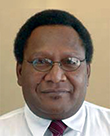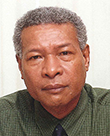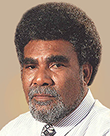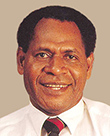History
Brief History of the Central Bank
The Bank of Papua New Guinea is a corporate entity which was first established under the Central Banking Act, Chapter 138 (repealed) in 1973. It started operations on 1 November 1973 as the country’s Central Bank. The primary objective of the Central Bank then was as provided for in that Act as follows:
“The Central Bank shall, within the limits of its powers, ensure that its monetary and banking policy is directed to the greatest advantage to the people of Papua New Guinea, and direct its efforts to promoting monetary stability and a sound and efficient financial structure.”
Prior to its establishment, the Bank of Papua New Guinea was a branch of the Reserve Bank of Australia (RBA) in the then Territory of Papua and New Guinea. In 1971, the Select Committee on Constitutional Development established a Committee on Banking, which recommended a blueprint for the establishment of an independent banking system framework.
Prior to and in anticipation of self-government and independence,the Government then first mooted the idea of introducing a national currency in July 1973. The then government vested the responsibility for introduction of a national currency in a Currency Working Group comprising of Department of Finance and the Port Moresby branch of the RBA. The kina and toea were eventually introduced as our national currency in April 1975.
Since its inception the Bank has gone through a lot of changes to be where it is now. The Central Banking Act Chapter 138 was repealed and replaced by the Central Banking of 2000. The new Act was introduced basically to make the Central Bank independent from all other influences. Bank of PNG continues to strive to meet the international standards and practices in all aspects of central banking.
The Central Banking Act of 2000 outlines the powers, functions and objectives of the Bank. Apart from the Central Banking Act of 2000, the Bank also administers the Banks and Financial Institutions Act of 2000, the Savings and Loans Societies Act, Life insurance Act of 2000, Superannuation (General Provisions) Act 2000 and the Savings and Loans Societies Act Chapter 141.
The increase in business activity and the need to house every employee under the same building saw the construction of a new premise to be known as the “ToRobert Haus” upon completion. It was named after the first Governor of the Bank and was built at the cost of sixteen million (K16, 000, 000) adjacent to the first building on Douglas Street in Downtown, Port Moresby. The building consisted of eight (8) floors with two (2) below the ground level. The construction work on the building started in 1988 and was completed in 1991. It was officially opened by the then Prime Minister, Sir Rabbie Namaliu on 1 November 1991.
Since its establishment the Bank has had seven (7) different governors and if a permanent appointment is made soon, it will go up to (8) eight. The first governor of the Bank was Sir Henry ToRobert. He was also the longest serving executive of the Bank who served for about 20 years since 1973. Sir Mekere Morauta was appointed the Governor of the Bank after Sir ToRobert and served for fifteen (15) months from 31 July 1993 to 15 September 1994. He was then replaced by Mr. Koiari Tarata who was the Governor from 15 September 1994 to 8 April 1998. The fourth person appointed as Governor after Mr. Tarata was Mr. John Vulupindi who served for only four (4) months before he was replaced by Mr. Morea Vele. After Mr. Vele vacated the position in 1999 a career central banker, Sir Leonard Wilson Kamit was appointed to the position. His successor, Mr. Loi Bakani took over the position from Sir Wilson Kamit on 9 December 2009.
The enactment of the Central Banking (Amendment) Act 2021 rendered the offices of the Governor and the Deputy Governor and the Bank of PNG board vacant. Mr. Benny Popoitai was previously acting on the position and following expiry of his term, Ms. Elizabeth Genia is currently Acting Governor.
The Bank of Papua New Guinea will continue to adjust and change to be on par with the other Central Banks and the financial community world-wide to provide up to date services to the people of Papua New Guinea.
Bank of PNG Governors – 1973 to 2021







